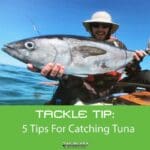Free shipping over $75 (before tax) to the lower 48
Free shipping over $75 (before tax) to the lower 48

Select your boat, and we'll show you products that fit your Make & Model.
Our product is made from at least
75% recycled polyester fibres.
Our product is made from at least
75% recycled polyester fibres.
Our product is made from at least
75% recycled polyester fibres.

Enter your account email address and password and click continue to log in.
All fields are mandatory. Please carefully fill all the fields and click continue to create account.

Please select your local RAILBLAZA website.
You’ve landed on our US site. Please visit our International site to access a wider range of features and products, as well as to find locations that carry RAILBLAZA products near you.
You’ve landed on our US site. Please visit our Canadian site to access products and shipping in Canadian dollars, as well as to find locations that carry RAILBLAZA products near you.
You’ve landed on our US site. Please visit our Australian site to access products and shipping in Australian dollars, as well as to find locations that carry RAILBLAZA products near you.
You’ve landed on our US site. Please visit our UK site to access products and shipping in UK pounds, as well as to find locations that carry RAILBLAZA products near you.
Top 5 Tips for catching Northern Bluefin Tuna
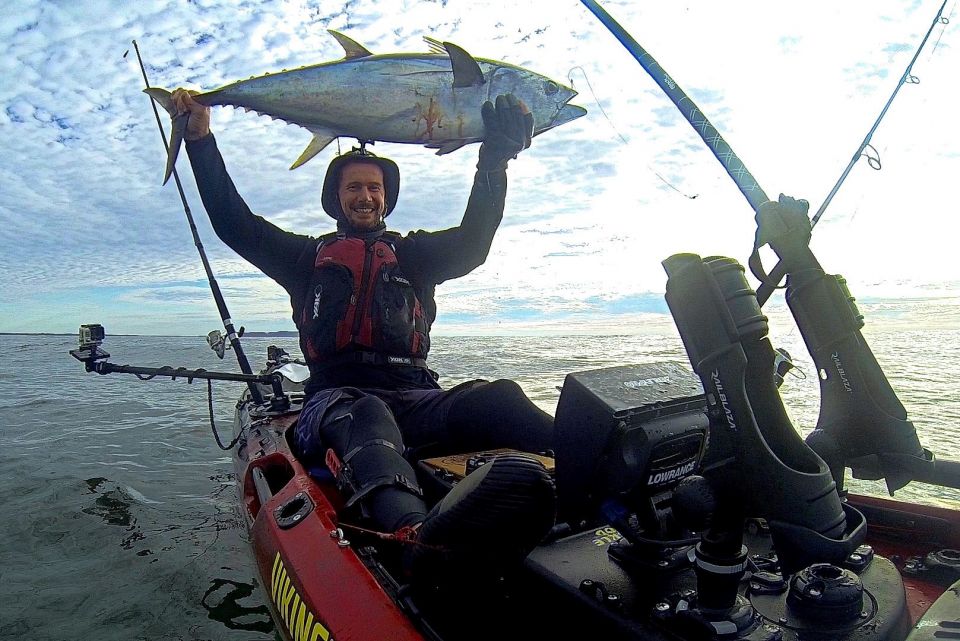
“No matter how many you catch the feeling and excitement of that hook up never gets old and its even more exciting when your getting towed around in a kayak trying to out muscle these powerful speedsters…
Jason aka “Paddle Guy” is RAILBLAZA pro team member based on the Sunshine Coast, QLD Australia where he has spent the last 5 season taken every opportunity to get on the water and chase the tuna that regularly scout the shallow waters of the coast this time of year. In this blog Jason shares his top 5 tuna tips and if you would like to see more videos be sure to watch the Tuna Tuesday videos on his channel.

This time of year the predominant bait is tiny white bait and there is tons of it. Because its small it hangs close to shore in the shallower water. Birds will usually be the big give away that Northern Bluefin tuna are about so stay with the birds, even those that look like they are only scouting, often they are following the tuna in hope they will lead to the bait.

Under the bait is where the big fish wait
Its not always about the surface bust ups…
Always keep an eye on your fish finder while moving with or to the birds, often the bait balls are broken up and you may find an isolated bait ball not being harassed by the birds, but be assured the tuna are aware and will be there so I mark that on my gps and try to stay with it at all times, if you see bigger arches then it’s a good idea to try dropping a lure down into the ball and working it back through (jigging or fast retrieve)
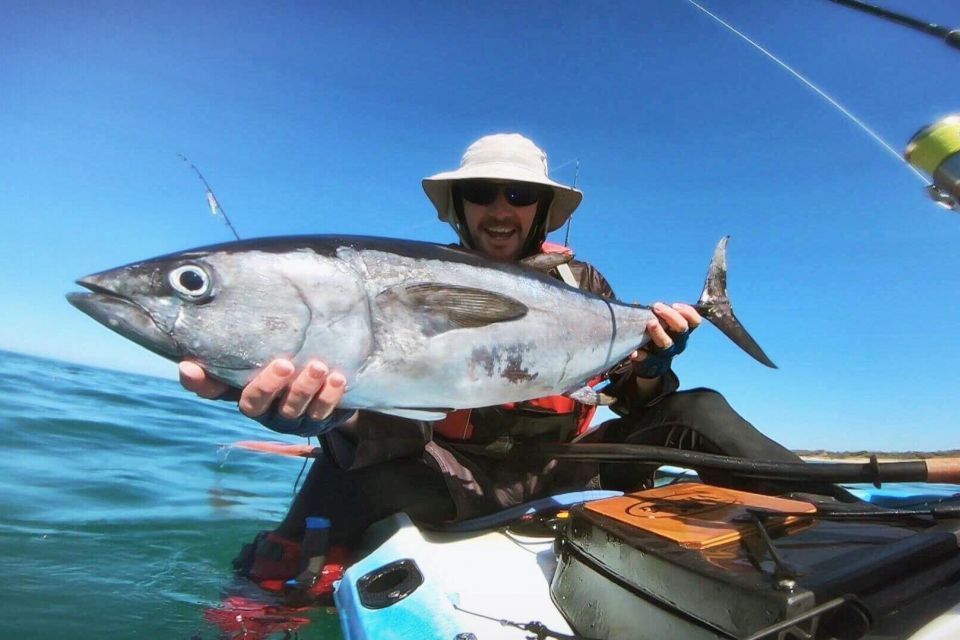
After 5 hours of frustration for no hits I changed tactic and dropped the Zman lure down deep to get this nice longtail Tuna
99% of the Bluefin tuna I catch are on a lure that looks just like the bait, whilst they will take a variety of lures or even larger live & dead baits when feeding hard I know this lure will also catch when the tuna appear to be a little fussy. My go to lure is the 3.75” pearl streakz from Zman, also opening night and ralphs shad have worked well too. Slow trolled and cast and retrieve will work, I match this with the TT Lures HD Headlockz in 2/0 & 3/0 hook with 3/8 or ½ oz weight – small but powerful and has held fish up to 25kgs, smaller hook makes for better presentation on this smaller lure.
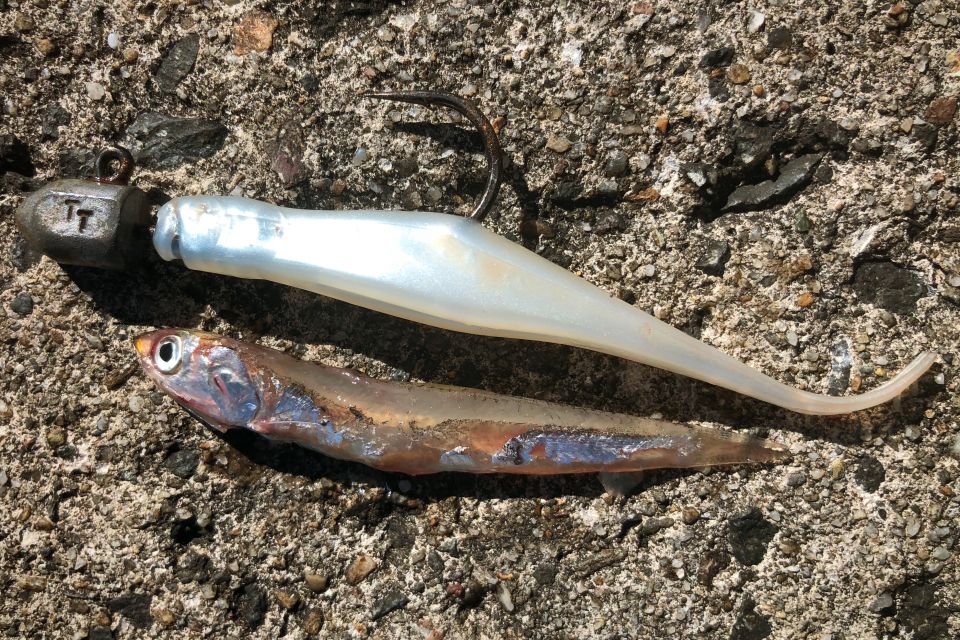
Just one of a many bait taken from the belly of the tuna to see what they are eating…match the hatch – Zman Streakz does that very well!
Some days where there is little bait then the tuna will hit almost anything for a feed so you can throw some poppers or stick baits for some exciting surfaces strikes, I usually stick with this combo as I know it catches when others are not but this season I am keen to get some surface strikes on camera so will have a go with some stick baits.
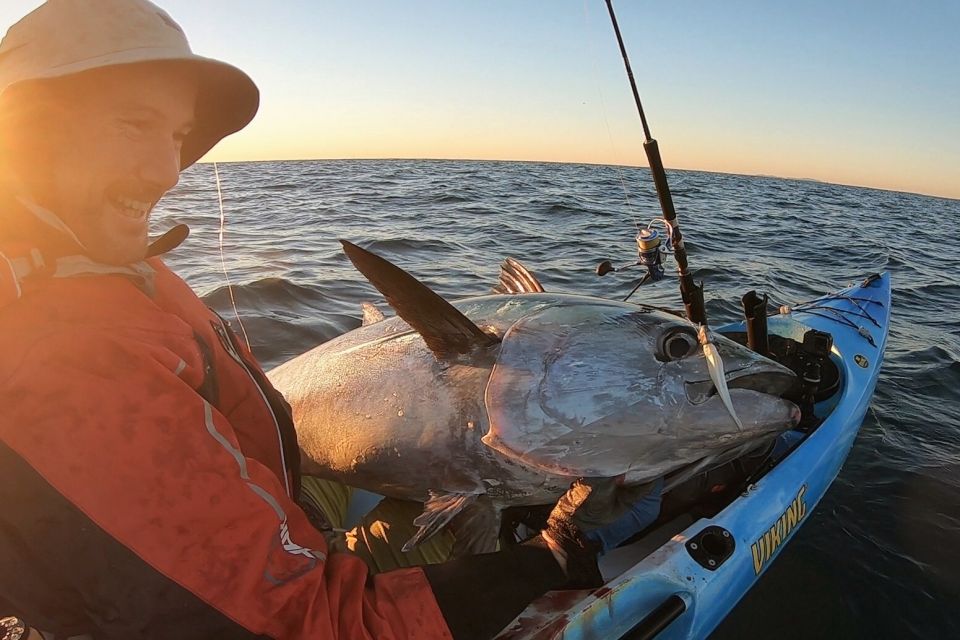
Firmly hooked in the mouth this is my go-to combo for catching tuna
Ideally the goal is to try to position yourself in front of the direction the school is feeding and land your cast just in front of the closest boils. Often that’s not poss or even when your cast is good you don’t hook up, here’s a technique I use to change the result.
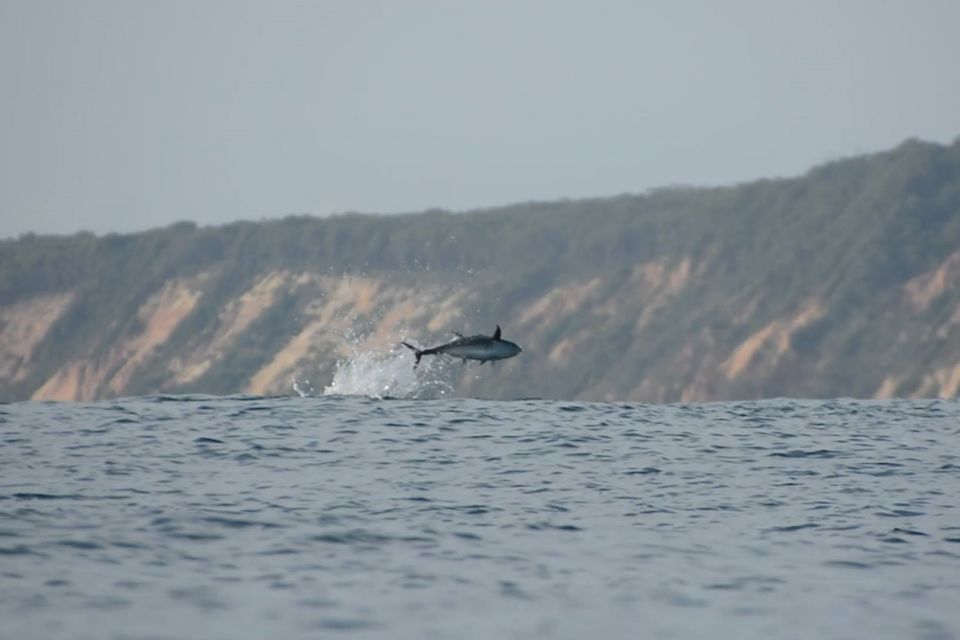
Flying tuna is a sight that sets the heart racing for any angler
Larger fish will not hit the surface as regular as a smaller one, they appear to hang down and pick up the scraps especially when the bait balls are plenty and large, that’s why I believe this lure works best when cast into the bait ball and let it fall through as if it’s a wounded bait, I roughly count 5 secs then flick the bail arm and hold on as they often hit the moment you put in your first retrieve wind.
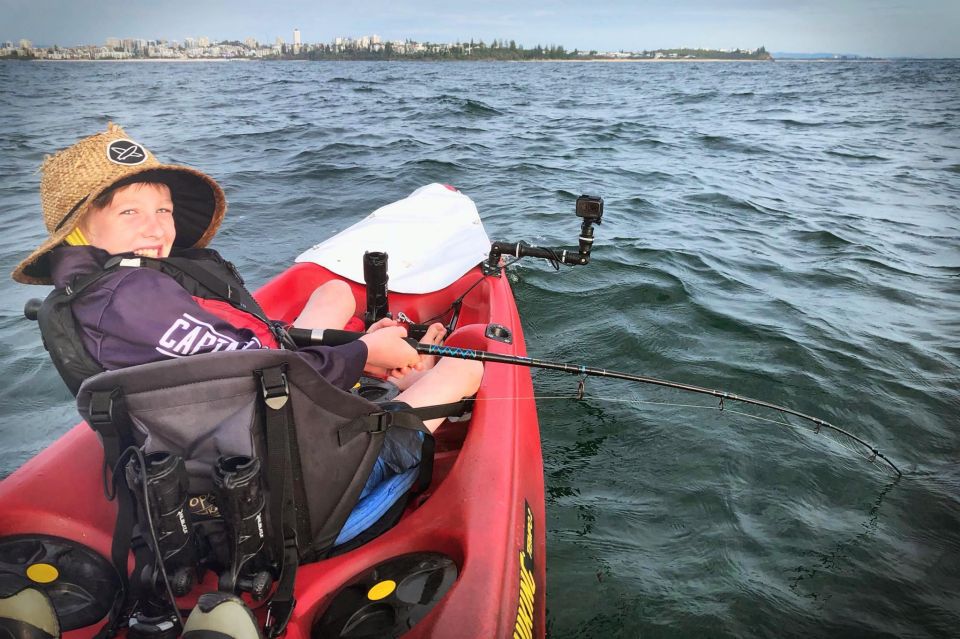
Nothing better than seeing that rod load up as my boy Alexander , aged 9yrs, got to experience here – great moment to capture #farfromscreens
This can be a frustrating game as the moment you get there they move on or something else scares the bait down (larger vessels motoring in too fast) I have one line out the back and one rod ready for casting. If your just not getting within casting range trust in the fact that the tuna and bait balls are often spread out and not just isolated to that surface action your chasing. If you have a sounder rely on that as earlier suggested and look for bait balls and larger fish arches, drop a lure down into those and always be trolling a lure.

When you get within casting range its easy to stuff things up and you sometimes only get one shot so take your time and make it count
That trolled lure has been hit many times for me while I am just paddling in the area trying to anticipate where the next bust up is going to happen. I prefer to have my trolling rig in the front Railblaza rod holder rather than behind me so I can see the strike and be ready to set the hook. When you stop paddling it falls and lower in the water column which as mentioned is often where the bigger fish hang. My theory on how far behind to troll I simple and works for me – cast the lure out behind, paddle 20 strokes, flick the bail arm, simple.
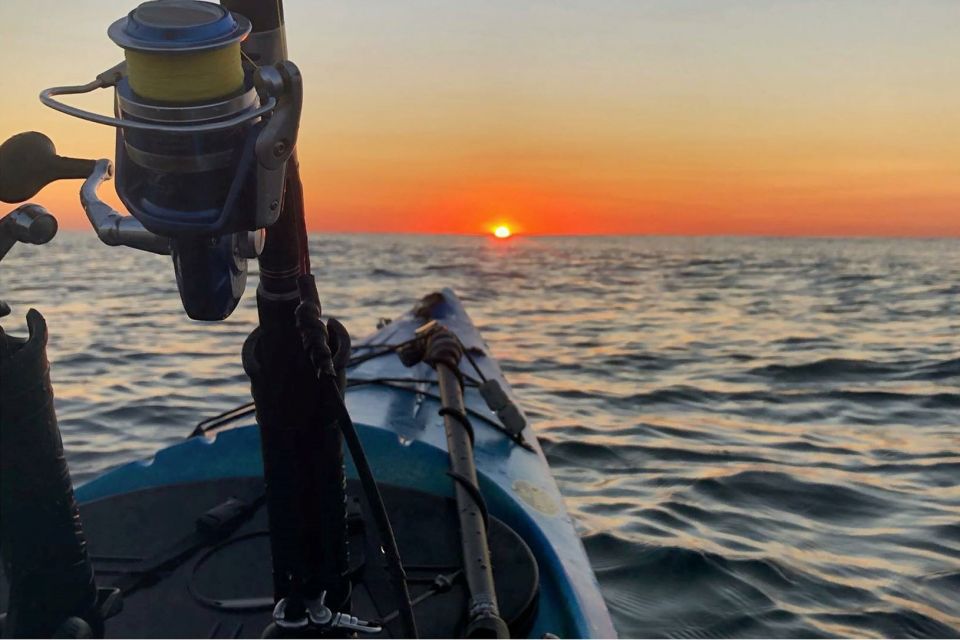
Always have a lure out the back trolling as the fish could be anywhere
I have 2 x Okuma Azores 4000 (14kgs drag) set up with 30lb braid and 30lb leader with 7’ Okuma Azores spin/jig rod 8-12kg, one for casting and one for trolling, I have landed all my tuna on 30lb and usual fight times have varied from 30mins – 45mins (exception of a few of my first tuna where I was not confident in putting too much pressure for fear of busting off, longest fight so far has been 1.45hrand I don’t wish to repeat that!)
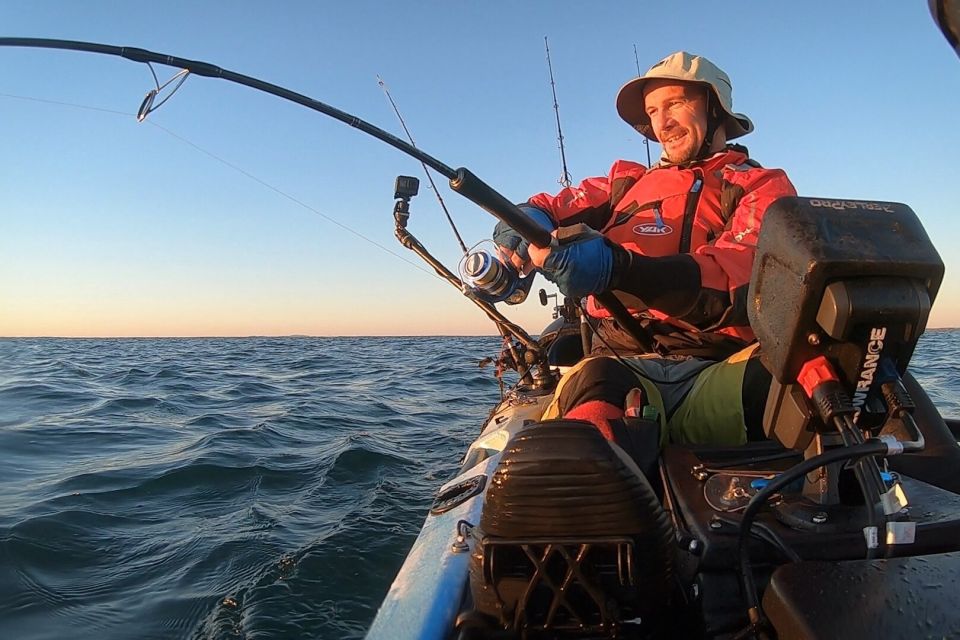
Okuma Azores 4000 outfit with 30lb is my go to combo
Often the harder you go the harder they go so light gear still gets them but can make it hard and if you plan to release the fish a quicker fight may increase the chances of survival. I also heard it from a Japanese chef that the longer the fight the lesser quality the sashimi due to the fish basically overheating in a long tug of war. I have some videos coming up of the crew hooking up on 20lb…aside from the first runs being awesome once the fight cracks the 1hr mark things get hard which is always fun to watch when its not you.
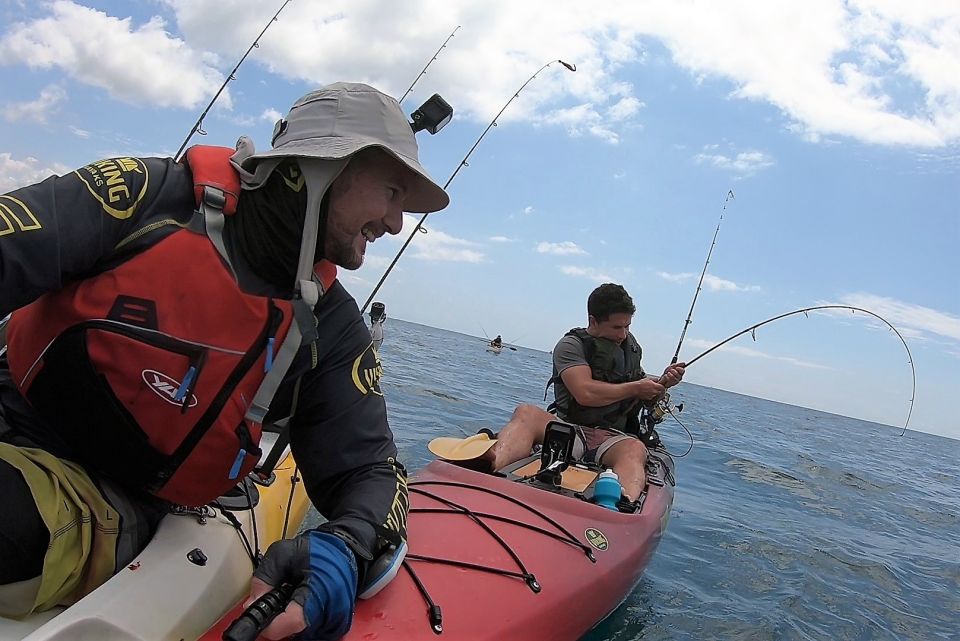
Adam trying to put the hurt on this tuna 1hr into the fight, I am there for support of course 🙂 – 20lb is like bringing a knife to a gunfight when there are big fish about – this one went 16kgs!
BONUS : Pro tip from local angler Paul O’Leary to help when dealing with the Tuna Tug O War “if you can’t lift them out of circles try and lessen the drag and they will head upwards or put the rod in the rod holder and paddle away from the fish which may help bring it to the surface making it easier to gain line”
I hope that helps you land a few string pullers this season, I will be out every week weather permitting and its worth noting that my largest Northern Bluefin to date was the one pictured (est 25kgs) landed in May last year 20m from the boat ramp! so always have a tuna option with you even when you think the season should be over.
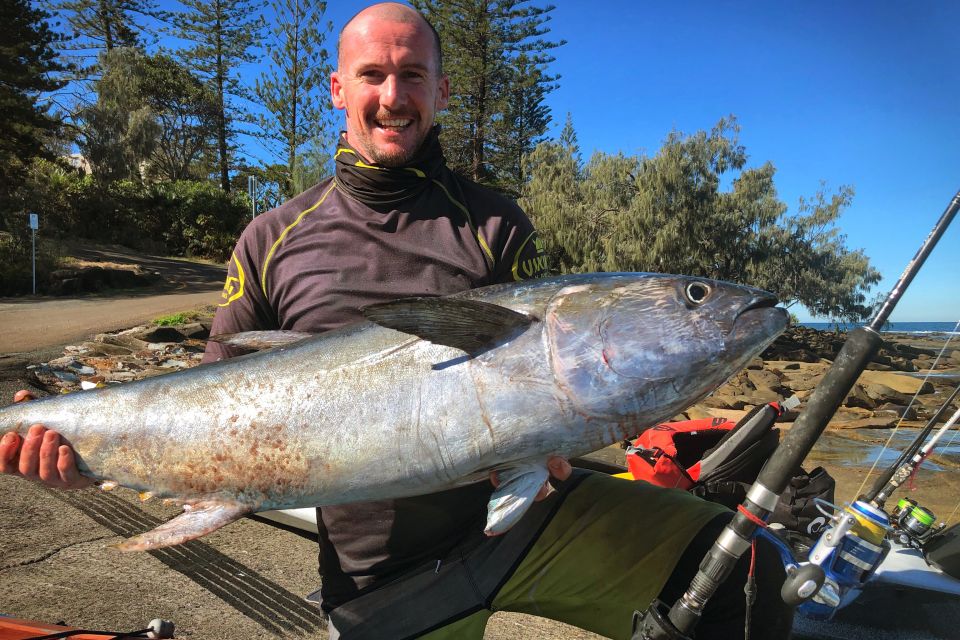
My biggest fish yet and was landed in May when the target species was snapper, lucky my tackle box always has a tuna option
And remember I have a Tuna Tuesday video dropping every Tuesday until I run out of footage from myself and the crew to share. I have about 4 years’ worth of trips to come including some great catch and cook ideas with my good friend and Japanese Chef, Tomo of Japanese Cuisine Classes. subscribe to my channel and watch this Playlist HERE
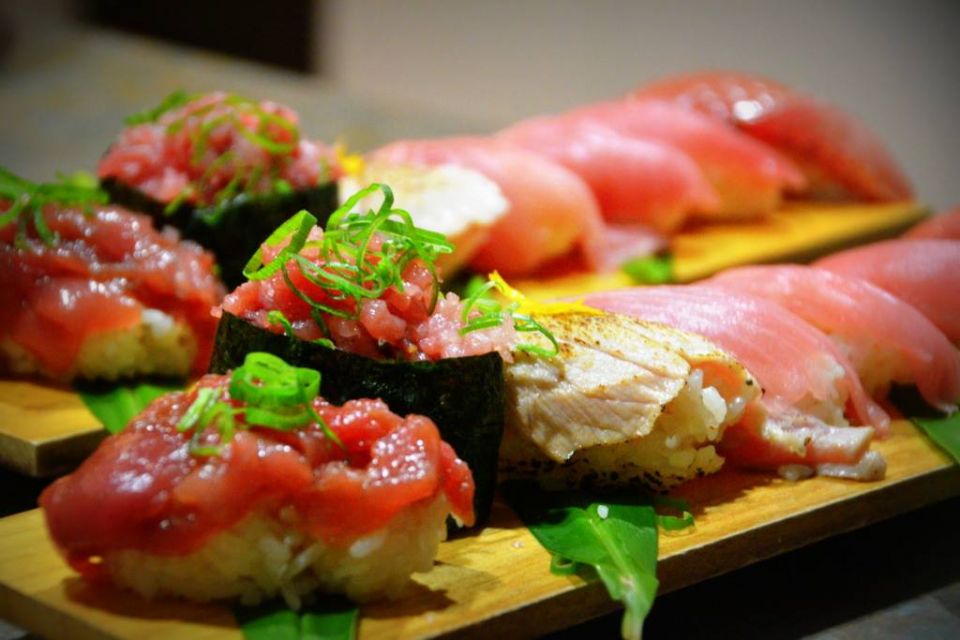
celebrating our catch with friends and family is by far one of the highlights of the adventure and no one serves it up better than Tomo





